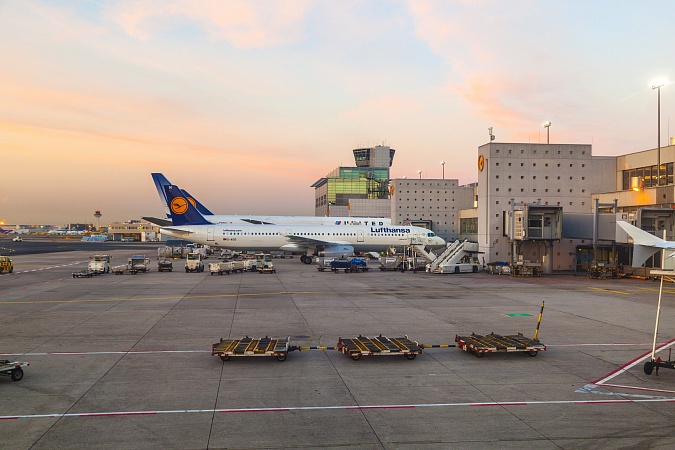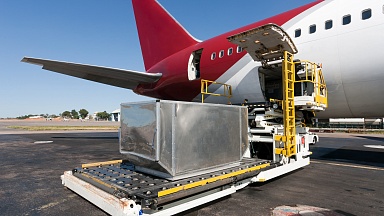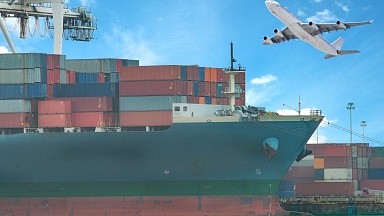In his monthly analysis of the latest Baltic Air Freight Index (BAI) tracking air freight pricing trends, Stifel’s Bruce Chan, director and senior analyst for Global Logistics & Future Mobility Equity Research, highlighted that Hong Kong to Europe and North America prices were up 66% and 85% year-over-year, respectively, with both indices rising 21% and 13% since August, “which is when the inflection began”.
Out of Shanghai Pudong (PVG), he noted that “the numbers are even starker. In September, the PVG to Europe basket (consolidated prices) rose 73% year-over-year and 38% since this August.”
Chan added: “The PVG to North America Basket climbed an astonishing 116% versus September 2020 and 40% since last month. Absolute rates on Shanghai to North America are now within spitting distance of the absolute peak in 2Q20 when the PPE surge drove air cargo rates to historical highs.”
Retailers ordering earlier
He noted: “The reason for the earlier upswing, in our view, is that retailers were caught off guard for last year’s peak by strong demand and scarce capacity. This year, many are preparing earlier for the holidays, while trying to navigate severe and persistent supply chain disruption.
“Walmart, for example, has professed to building as much inventory as it can at the end of the third quarter. We believe that part of that strategy involves leaning on suppliers to produce and provide the goods, but also working to secure as much transportation capacity as possible by leveraging scale, creativity, and pure dollars.
“The company has been buying containers, expanding its network of providers, and even chartering ships. Other retailers have been taking similar measures…especially those with deep pockets, in our view.”
Looking into the source of the demand, he said “the consumer remains quite healthy, especially in the US. Stifel’s proprietary surveys show that spending intentions are indicating higher than they did 12, 18, and even 24 months ago. Part of that strength is stimulus driven, in our view. But we think there are fundamental factors at play too.
“Wages remain a significant global pressure point, with tight labour supply across many facets of the economy, including for lower wage workers. Resultant pay increases are buoying incremental consumer spending power and elevating those purchase intent numbers.”
Goods-to-service switch overstated
And, while there has been concern over a goods-to-service rotation in consumer discretionary dollars, “much of that concern has at least been pushed out due to the Delta variant”, Chan noted.
Meanwhile, big changes are afoot in the world of e-commerce that are consuming more capacity across the supply chain.
“So, demand fundamentals are strong, and should be for at least another few quarters,” Chan highlighted. “But supply issues aren’t getting much better. Again, because of persistent COVID concerns, international passenger travel remains subdued, and with it, global belly capacity. We think that the longer this ‘work from home Zoom culture’ stays with us, the more likely it is to stick. So, global passenger belly space may not return to full steam for quite a while.”
Although the air freight industry “can, and has been, responding – freighter conversion lines are maxed out, for example – but the process will take time. Yet creative capacity bandages like ‘pfreighters’ are maybe less likely this time around.
“Fuel costs have increased, which has put pressure on operating costs and shrunk operator margins versus 2Q20 – which is not to say that those margins aren’t still robust, just that this market is not as compelling, even though absolute air cargo dollars per kilo are converging with the last rate peak. At the same time, ocean freight remains mired in backlog and delay.
“According to Project44 data, schedule reliability continues to degrade, even as container rates continue to rise. And the number of ships waiting for berth on the U.S. West Coast also continues to reach new peaks. This means that for desperate shippers, air cargo may continue to be a pressure relief valve for desperation restocking, if it can be called ‘relief’, and prices should remain elevated through the end of the year.
Short-term modal shift
TAC Index analyst Gareth Sinclair commented: “Disruption to supply chains has continued throughout September with more of the same causals we have seen in previous months and continued short term modal shift to air freight. Demand continues to be strong as economies continue to recover and open after restrictions with a strong peak expected and no likelihood of rates softening until the New Year.”
He highlighted that the BAI index finished the month at 4,272 which is the highest level since the index was first reported in January 2018, with the last highest level being 3,975 in mid-May 2020. This final full week of September level is +80% versus the equivalent week in 2020 and +279% versus 2019.
“With the index rising for nine consecutive weeks, it is 21% above levels seen at the end of August,” Sinclair noted. “All the 17 trade lane indexes were positive versus the end of August levels, ranging from a modest +0.3% on Frankfurt to USA, to +83% on Frankfurt to China.”
CN/HK Markets
Both the China and Hong Kong markets saw strong improvements in September over August of 24% and 15%, respectively, and both continued to show gains of ~50% versus last year. All the trade lanes from these markets were positive over August. Both indices to Europe saw similar month on month improvements, 31% and 27%, respectively.
But the difference between the ex-China and ex-Hong Kong markets was larger on flows to North America, with HKG +6% versus August levels whilst PVG was +24% – impacted by capacity constraints, Sinclair said.
Hong Kong to Southeast Asia (SEA) finished the month +15% versus the last week of August.
Ex-US market
Meanwhile, the market ex-Chicago (ORD) “saw contrasting performance to Europe and Southeast Asia”. ORD to EUR was up 10% versus last month but only up 7% versus 2020. However, the latest index was still positive versus 2019 by 179%.
ORD to SEA was up 42% versus August and 108% higher than last year with a huge 194% growth versus 2019.
European markets mixed
The European market continued to see a mixed performance by lane. Frankfurt (FRA) to US was a modest 0.3% up versus August and down on last year by -3% although +219% versus 2019. FRA to SEA was up by 51% over last month and 84% versus 2020 whilst FRA – China (BAI25) was +83% and +130%.
LHR to US was up 6% versus August, up 30% versus 2020, and up a huge 478% versus 2019. LHR to SEA (BAI43) was up 15% on last month and 55% versus 2020.
“In summary, air freight prices strengthened in all markets and overall, the index was at its highest level since the index was first reported,” Sinclair commented. “Supply chains, both air and sea, are struggling under the strain of strong demand and operational disruption so it would be wise to shop early for the holiday season to avoid being disappointed.”





